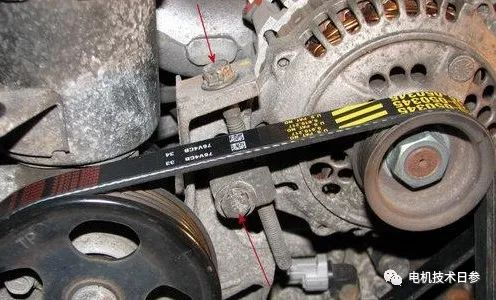Why use high-speed motors to drive low-speed equipment?
The transmission structure of a diesel generator accidentally seen on the roadside aroused interest in discussing the mechanism of motor transmission. Motor products are a kind of power equipment that converts electrical energy into mechanical energy. The transmission mode of the motor mainly includes coupling transmission, belt transmission and gear rotation. The characteristic of coupling transmission is that the speed of the driven equipment is the same as the speed of the motor. However, belt transmission and gear transmission have variable speeds, and most of them are for deceleration transmission with larger torque. When the driving wheel and the driven wheel have the same diameter, they can only play a single role of dragging mechanical equipment.
For example, in the more common belt pulley booster mechanism, the belt tension is fixed, the diameter of the pulley at the motor end is small, and the diameter of the pulley driving the press is large, which means that the torque driving the press is the multiple of the output torque of the motor multiplied by the diameter ratio of the pulley, and the rotational speed exactly the opposite.
Why do most machines use high-speed motors? The power required for a particular piece of equipment to work is fixed, and the rotational speed of the rotating parts of the equipment is usually not high. At this time, the selection of the drive motor is acceptable whether it is high speed or low speed. But for asynchronous motors, the higher the speed, the smaller the size of the motor with the same power, and the higher the efficiency. Most machines are driven by asynchronous motors, so it is natural to use the "high-speed motor + reducer" mode.

The deceleration transmission technology has been well applied in many mechanical equipment such as cable cars, presses (punching and shearing equipment that can be seen in almost every motor factory), three-dimensional parking devices, etc.

Strictly speaking, the reduction transmission should be called variable speed transmission. A typical example is the gearbox, which is an extremely important core component in a wind turbine. From the perspective of the generator, the high speed of the output shaft of the motor is converted to a low speed by the gearbox to match the low speed of the wind blade. The structure and working principle are similar to the traditional deceleration There is no difference between the machine and the machine; from the view of the blade end, the low speed and high torque of the wind blade are converted into the high speed and small torque input on the motor shaft (relative to the high torque of the wind blade end) through the gearbox, which is a speed increaser. Therefore, the wind turbine gearbox is a reducer in the traditional sense. The principle is the same, but the speed ratio range is much wider and the reliability requirements are much higher. It mainly involves the material and processing of key parts such as bearings and gears, and yaw control. The complex mechanism and many other cutting-edge technologies.

Mechanical variable speed or deceleration transmission is divided into two categories: belt transmission and gear transmission. The belt is driven by friction and the direction is the same; the gear transmission is driven by the extrusion of teeth, and the rotation direction of the driving wheel and the driven wheel is opposite; Belt transmission is generally used in long-distance, occasions with low speed ratio requirements or excessive load impact force, which is easy to cause slippage; gear transmission will not appear slippage, and gear transmission is used in occasions with compact structure and high speed ratio requirements . From the comparison of the efficiency of the two transmission methods, the excellent gear transmission efficiency can reach about 98%, and the efficiency of the belt transmission will be slightly higher.

From the analysis of the mechanism of variable speed transmission, when the motor wheel is larger than the diameter of the driven equipment wheel, it is a transmission for obtaining high speed; on the contrary, when the motor wheel is smaller than the diameter of the driven equipment wheel, it is for obtaining high speed A transmission of torque. From the perspective of energy conversion, using high-speed motors to drive equipment is a relatively energy-saving solution.



























 XINDA
XINDA